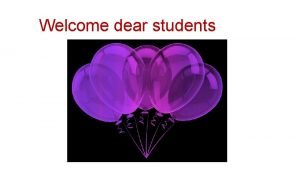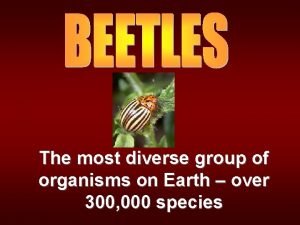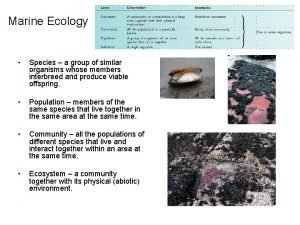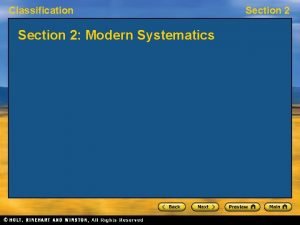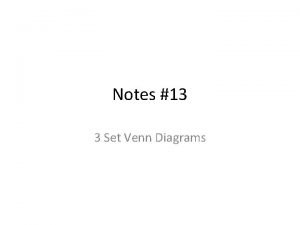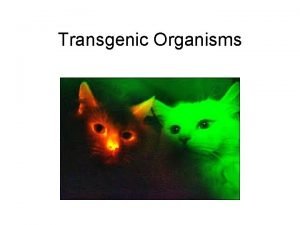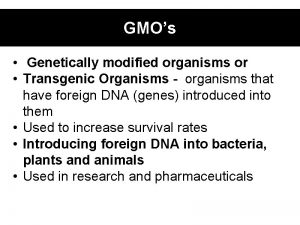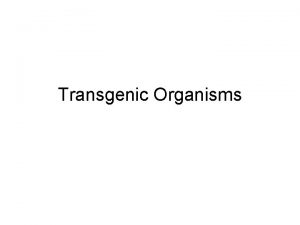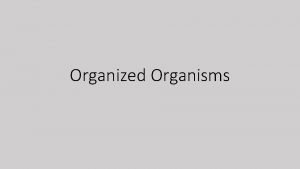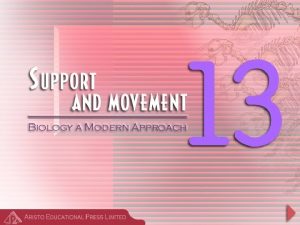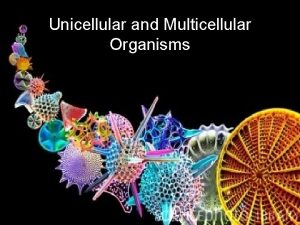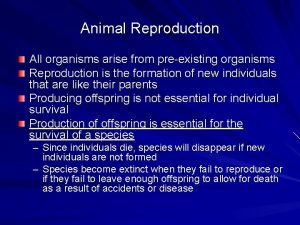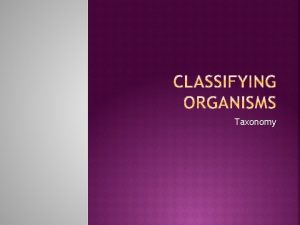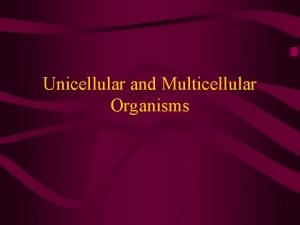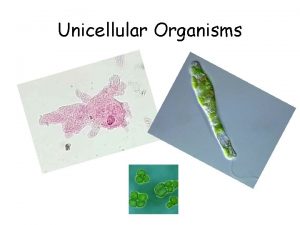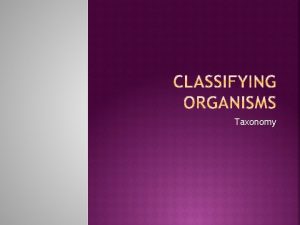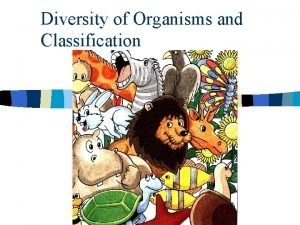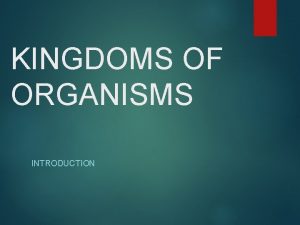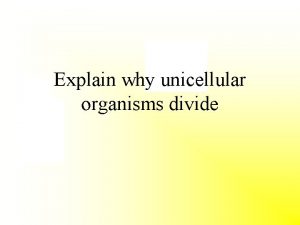WELCOME STUDENTS How will you group this organisms



























- Slides: 27

WELCOME STUDENTS

How will you group this organisms? Write it down in the given worksheet.

Now is it easy to group? What made it easy?

Have you anytime thought how will you search this organisms in books? q Which books you will search for? q How will you search? q Is there any sequence for searching this organisms in books? q Let us see how we can classify the organisms into different groups. . .


Do you know this place? ?

This is hot water spring. Have you ever thought who might be surviving in this water?

MONERA q Characteristics Ø Unicellular and Prokaryotic. Ø True nucleus is absent. Ø Monerans are mainly Bacterias. Ø Mostly have a rigid cell wall. Ø Microscopic organisms. Ø Have various modes of nutrition, could be Autotropic or Hetetropic Ø Have two Major groups 1. Eubacteria(true bacteria). It includes bacteria and cynobacteia 2. Archaebacteria (ancient bacteria) Ø Examples- E. coli

Examples of MONERA

q Ø Ø Ø PROTISTA Characteristics Unicellular and Eukaryotic. True nucleus is Present. Protista are mainly Protozoans. Microscopic organisms. Have various modes of nutrition, could be Autotropic or Hetetropic

Examples of Protista

Q. 1

Now show will you classify Morena and Protista? Base on which characteristics? Write or draw in the form of flowchart.

q Characteristics Ø Mainly have Multicellular body with the exception of yeast which is unicellular fungi. Ø True nucleus is Present. Ø Their cell wall is made up of chitin ( a tough complex sugar ). Ø Their body is in the form of interwoven mass of fine thread like structures called Mycelium (a bunch of fine thread structures are called Mycelium) Ø The particular or individual thread structure is called Hyphae. Ø They have saprophytic nutrition i. e. live on the dead and decaying matter. Hence they are also called Saprophytes

Examples of fungi (mushrooms)

What do you observe in this picture?

PLANTAE q Characteristics : Ø Eukaryotic and Multicellular. Ø They have an additional covering on plasma membrane called Cell membrane. Ø Their cell wall is made up of cellulose. Ø They are autotrophs. Ø Include Major groupsi. Thallophyta ii. Bryophyta iii. Pteridophyta iv. Gymnosperms v. Angiosperms

Have you seen these plants?

Ø Ø Ø They are Eukaryotic and Multicellular. Cell is not having cell wall only plasma membrane is present. They are Heterotrophs (means having heterotopic nutrition ). Generally have locomotary organs. This group contains all invertebrates and vertebrates.


Plant cell and animal cell Write down the characteristics of plant cell and animal cell.

What is the main difference between the plant cell and animal cell?

How will you classify these groups into a flowchart? Make a sketch of it.

1 Identify the correct classification Organisms Prokaryotic PROTISTA 2 Eukaryotic Unicellular Organisms Multicellular MONERA Cell wall Without cell wall Prokaryotic MONERA Eukaryotic Unicellular Non photosynthetic PLANTAE FUNGI Multicellular PROTISTA Photosynthetic ANI MALIA Cell wall Non photosynthetic Without cell wall Photosynthetic ANIMALIA FUNGI PLANTAE

Organisms Prokaryotic KINGDOM MONERA Eukaryotic Unicellular Multicellular KINGDOM PROTISTA Cell wall Without cell wall Non photosynthetic Photosynthetic KINGDOM ANIMALIA KINGDOM FUNGI KINGDOM PLANTAE

Homework Make a list of 5 examples of the organism in each Kingdom. Also make a note of the exceptional examples like for example in kingdom Fungi Yeast is the exceptional.

 Member of the same species
Member of the same species Unicellular vs multicellular activity
Unicellular vs multicellular activity Why was rizal called the champion of filipino students?
Why was rizal called the champion of filipino students? Welcome canada tax for international students
Welcome canada tax for international students To my dear students
To my dear students Welcome my dear students
Welcome my dear students Welcome dear students
Welcome dear students Welcome my dear students
Welcome my dear students Welcome dear students
Welcome dear students Welcome my dear students
Welcome my dear students My pepole doc
My pepole doc Welcome dear students
Welcome dear students Most diverse group of organisms
Most diverse group of organisms Group of similar organisms
Group of similar organisms Modern systematics try to group organisms based on
Modern systematics try to group organisms based on Welcome welcome this is our christmas story
Welcome welcome this is our christmas story Star wars venn diagram
Star wars venn diagram A group of students found metamorphic rocks near a campsite
A group of students found metamorphic rocks near a campsite Group discussion vs debate
Group discussion vs debate Local guide program
Local guide program Welcome to our group presentation
Welcome to our group presentation Welcome group
Welcome group Power bi chicago
Power bi chicago Good morning students how are you today
Good morning students how are you today Good morning students.
Good morning students. What would you do scenarios for students
What would you do scenarios for students Good morning students how are you today
Good morning students how are you today Goodmorning students
Goodmorning students











